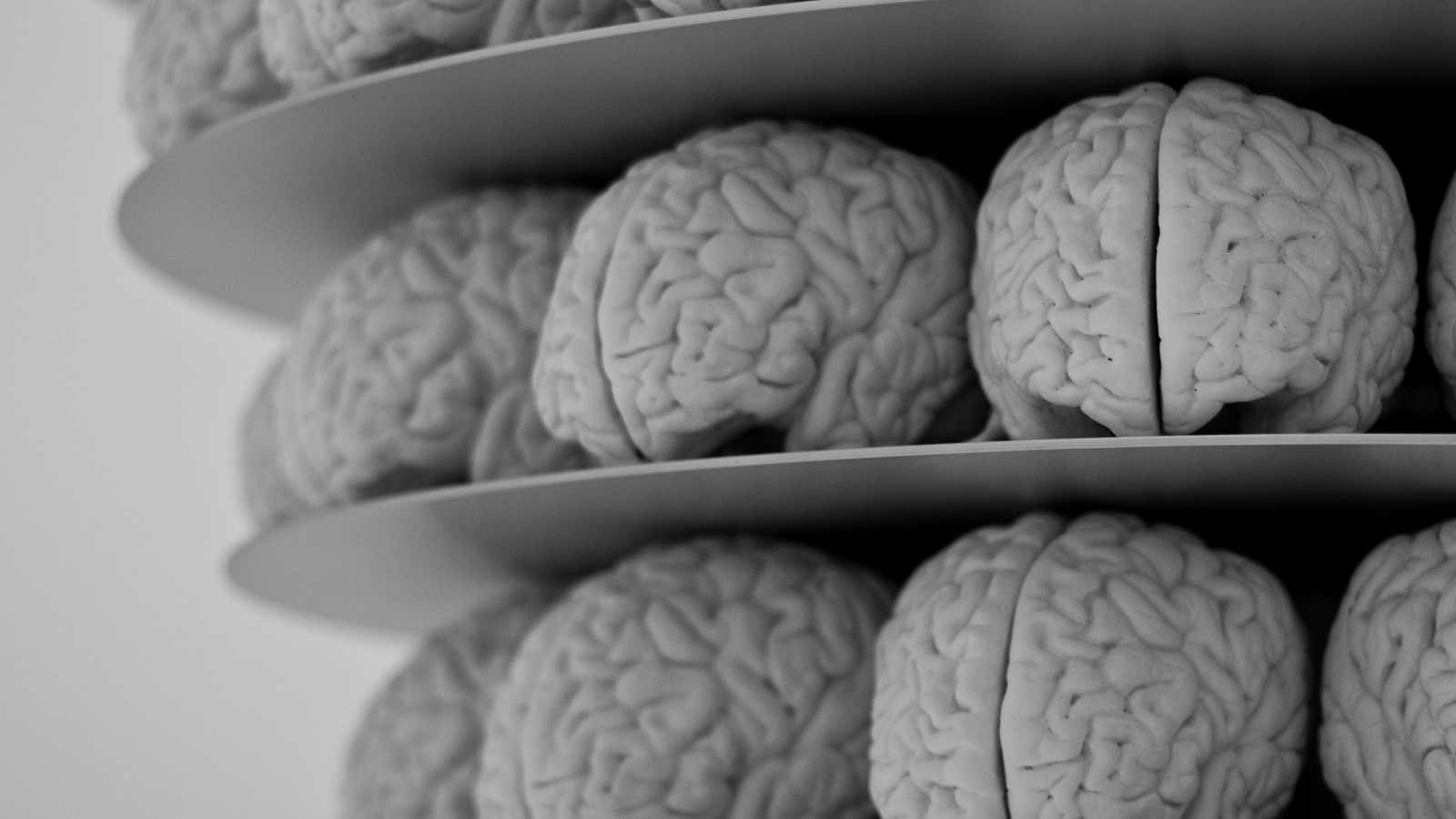Not many things can do this to the share price of a big pharma company:
The reason for the 15% drop in Eli Lilly’s share price is the announcement that its most promising Alzheimer’s drug in development, solanezumab, has failed in the final phase of clinical trials. If it had succeeded, it had the potential to be a blockbuster drug, bringing in more than $1 billion in sales per year; the global market for Alzheimer’s disease drugs is predicted to surpass $13 billion by 2023, according to consulting firm GlobalData.
Stock markets highly value experimental Alzheimer’s drugs because there is currently no treatment available to halt or slow down the disease, a form of dementia. The drugs available today only help relieve symptoms of Alzheimer’s. And even those generate sales of about $5 billion. Meanwhile, the illness is a tremendous burden on society: according to the charity Alzheimer’s Association, the cost of the disease to patients, their families, and, in turn, the economy in the US is estimated to grow to over $200 billion by 2025.
Why don’t we have an Alzheimer’s drug yet? Quartz reported previously:
There are many reasons for our lack of success. First, we’ve only really understood what Alzheimer’s is in the last 20 years, after we developed the technology to probe inside the brain. But, despite this progress, we still don’t have a test to determine whether someone has dementia. Diagnosis involves taking into consideration many factors, before expensive tests that can determine the presence of Alzheimer’s can be considered worth doing.
People only seek doctors when there are signs of mental decline, but often it’s too late by then. This late diagnosis makes it difficult to recruit patients with early Alzheimer’s, which is where most drugs being developed are meant to act.
Additionally, the brain is protected by the blood-brain barrier, which is normally beneficial, such as when it stops a nasty bacteria from entering the brain. But it also makes getting drugs into the brain very hard.
Most drugs currently in clinical trials attack the formation of plaques in the brain. These plaques, made of misfolded amyloid-beta proteins or tau proteins, are thought to be the cause of Alzheimer’s.
Solanezumab was designed to attack amyloid-beta proteins. Its failure has made many question whether that’s the right way to go after Alzheimer’s—and a small study published in March this year added support to the hypothesis that tau proteins may be the real culprit of Alzheimer’s. In July, the biotech company TauRx announced mild success with a drug that was designed to attack tau proteins. Other promising drugs in trials include azeliragon, which reduces brain inflammation (that has been linked to Alzheimer’s) and NPT088, which targets both amyloid-beta and tau proteins involved in Alzheimer’s but also alpha-synuclein protein which leads to other brain disorders, such as Parkinson’s.
With more than 100 failed Alzheimer’s drug trials, it’s hard to pin high hopes on any new potential medicine. But failure is also an inevitable and important (though unglamorous) part of the business of scientific progress, so Eli Lilly’s latest stumble doesn’t mean Alzheimer’s patients and their families should give up all hope, either.
